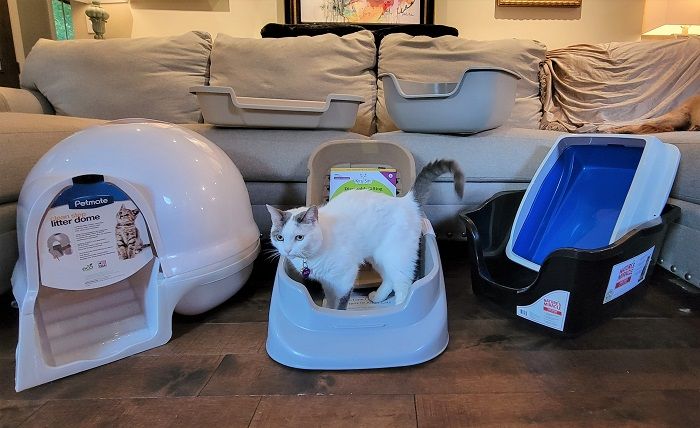
Kate Barrington / Cats.com
Though you may start feeling the effects of age on your body as soon as you hit your thirties, the mobility-limiting effects of arthritis don’t typically kick in until after the age of 50. That’s when humans are considered middle-aged – the term “senior” is reserved for individuals over the age of 65.
Cats start to show the physical signs of aging as early as 7 years, though some don’t start looking or acting like seniors until 10 or 11. It may sound young, but 11 is roughly equivalent to 60 in human years.
As your cat gets older, both of you may find yourselves needed to make adjustments to your lifestyle. Your cat may be less eager to jump from heights or climb stairs and you might want to look into products that make a senior cat’s life easier. The litter box is a great place to start.
Our top pick for the best litter box for senior cats is the Lucky Champ Cat Litter Pan because it’s durably constructed with high walls to contain mess but has a dropped entry for easy access by older cats and cats with limited mobility. We’ll take a closer look at this litter box and our other top picks below.
At a Glance: 8 Best Cat Litter Boxes for Senior Cats




In the comparison table below, we’ve highlighted some of the most important features of each product. You’ll find more detailed information about each product later in the article.

Lucky Champ Cat Litter Pan
- Entry 3.5 inches high makes access easy for older cats
- High back wall helps contain urine spray and litter scatter
- Rigid plastic construction offers excellent durability
Litter-Robot 3 Open Air Automatic Litter Box
- Reliable performance - doesn’t tend to jam
- Automatically sifts litter after each use
- Optional 3-step ramp improves accessibility

Kitty Go Here Senior Cat Litter Box
- Wide litter bed measures 24-by-20 inches
- Low 3-inch entry point for easy access by older cats
- Available in small and large sizes, three colors

Van Ness Large High-Sided Litter box with Frame
- Affordably priced under $10
- Included frame raises the walls to 8 inches
- Dropped entry sits about 4 inches off the ground

Petmate Booda Clean Step Cat Litter Box Dome
- Low, step-up entry makes access very easy
- Helps control litter scatter and litter box odor
- Prevents dogs from eating out of the litter box

PetFusion BetterBox Cat Litter Pan
- Durably constructed from non-porous ABS plastic
- High 8-inch sides help contain litter and urine
- Generously sized for the average cat

Frisco High-Sided Litter Box
- Very high sides, 11 inches off the ground
- Well-constructed, made with fairly thick plastic
- Dropped 5-inch entry for improved access

Kitty Sift Large Disposable Sifting Litter Box
- Made from 100% post-consumer recycled materials
- Sifting trays make cleaning the litter box quick and easy
- Low 4-inch entry for easy access by older cats
Why Should You Trust Us?
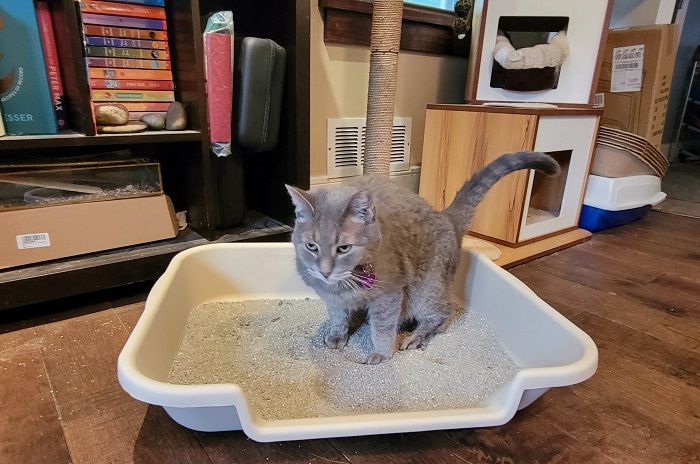
Kitty Go Here Senior Cat Litter Box. Kate Barrington / Cats.com
Over the last three years, we’ve spent a lot of time figuring out what it takes to make a great litter box.
We’ve researched the types of litter boxes available, read hundreds of customer reviews, and performed real-world tests on over a dozen top boxes. We spent over 40 hours testing these litter boxes’ sturdiness, cat-friendliness, and ability to prevent sticking and litter scatter.
In addition to research and testing, we consulted with several veterinarians to get their take on which litter boxes work best and are the most effective for cats.
Based on this extensive research and hands-on testing, we’ve selected the 8 products described below as the best litter boxes you can buy for senior cats.
Our Veterinary Advisors
How We Picked
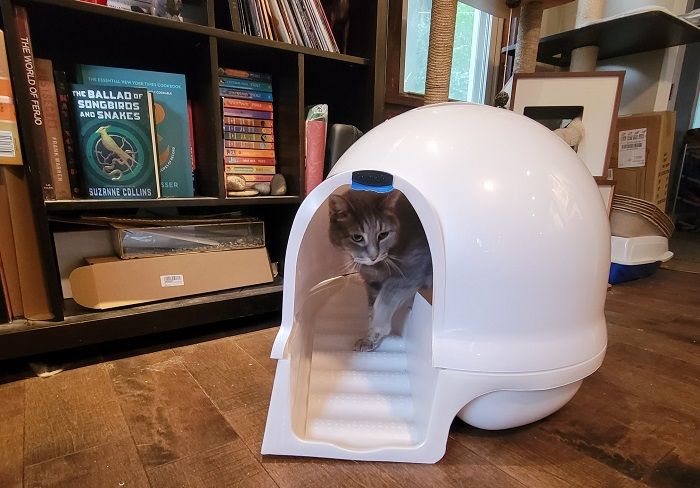
Petmate Booda Clean Step Cat Litter Box Dome. Kate Barrington / Cats.com
Over the past month, I’ve been testing more than a dozen different litter boxes with my three cats Bagel, Biscuit, and Munchkin. All three of my cats are seniors, aged 10 through 12 years. While I’m fortunate that none of my cats has developed arthritis or other mobility issues, I was somewhat limited in my ability to test these litter boxes in that particular area.
To assemble this list, I looked for litter boxes that were generously sized with dropped entry points 5 inches in height or lower. I also considered factors such as material quality, ability to contain scatter, and added features.
The Best Litter Boxes for Large Cats: Our Top 8 Picks
5 Tips for Making Your Senior Cat More Comfortable
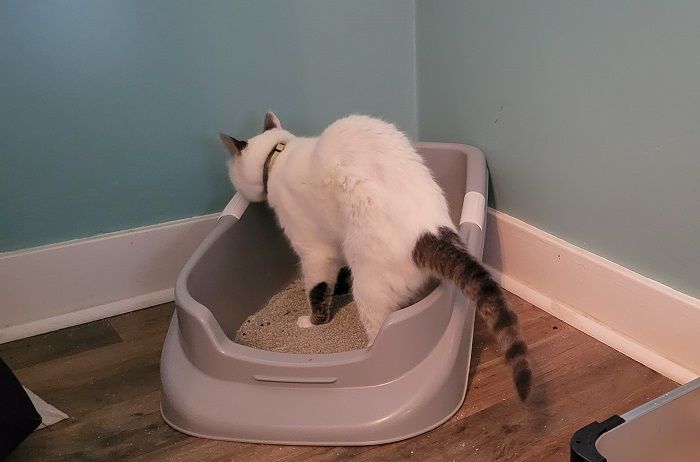
Lucky Champ Cat Litter Pan. Kate Barrington / Cats.com
Now more than ever pet owners treat their cats less like pets and more like family. Since your cat is a member of the family, he deserves to be just as happy in your home as everyone else. As your cat’s guardian, that makes it your responsibility to anticipate and accommodate your cat’s changing needs throughout his life.
When your cat gets older, once-simple things like jumping onto the bed or climbing the cat tree may become more difficult. Your cat is still your faithful companion now as much as ever – he just might need a little help enjoying life to the fullest.
Here are five simple things you can do to help keep your cat comfortable as he ages:
Switch to a Litter Box With a Dropped Entry.
Your cat can choose how active he wants to be on a day-to-day basis, but he’ll always need to use the litter box. If your cat is getting up in years and isn’t quite as mobile as he once was, he may appreciate the switch to a litter box that requires less effort to access.
Senior cat litter boxes typically feature dropped entries that stand no more than 5 inches off the ground. You can find models that still incorporate features like high sides or non-stick coatings, but these add-ons should be considered secondary to features that improve your cat’s comfort.
Make Other Essentials Easier to Access.
Not only should your senior cat be able to easily enter and exit the litter box, but other essentials like food, water, and bedding should be accessible as well. An elevated cat bowl may spare your cat some pain if he finds it uncomfortable bending down to eat or drink.
Bedding should be moved to the floor or to a location easily accessible with the addition of steps or a ramp. When moving bedding, make sure your cat still gets to utilize the spaces he most enjoys. This might mean setting up stairs to his favorite windowsill or installing ramps between the different levels of his cat tree.
Ensure Your Cat Is Getting Enough Nutrients and Calories.
Many cat owners assume that a decrease in activity level necessitates a decrease in calorie intake but that may not be the case with all case. It’s essential for your aging cat’s health and longevity that he maintain a healthy body weight. If your cat tends to fall on the heavier side of the spectrum, you may need to make additional efforts to keep your cat active and watch how many treats you give them. For many cats, however, keeping weight on is a bigger concern.
Your veterinarian can help you determine your cat’s ideal weight and may recommend a prescription diet for specific health problems that are impacting your cat’s ability to maintain a healthy weight. Healthy senior cats will benefit from the highest quality nutrition you can consistently afford, whether that means an upgrade to wet food from dry food or adding fresh or raw cat food into the feeding rotation.
Increase the Frequency of Vet Check-Ups to Twice a Year.
Young and healthy cats typically don’t need more than an annual check-up to catch up on vaccinations, but older cats may need more veterinary attention. Your vet can help you keep an eye on your cat’s weight and any existing health problems he’s being treated for. In between visits, it’s important to pay close attention to your cat’s behavior as any sudden or significant change could be an indication that something is wrong.
Learn How To Identify Signs of Pain and Illness in Cats.
Cats have a natural instinct to hide pain and discomfort because it makes them vulnerable. Unfortunately, this habit can delay treatment when cat owners don’t recognize the subtle hints that their cat might be giving them. Any change to your cat’s eating or sleeping habits, litter box usage, or energy level could be a sign of a developing health problem.
When in doubt, it never hurts to check in with your vet. If your cat isn’t showing immediate signs of distress or disease, you might just leave a message with your vet or send an email. Should an emergency situation arise in between vet visits, you’ll want to have the number and address of a 24-hour clinic or emergency vet where you can go for immediate treatment.
Wrapping Up
Every cat has his own unique preferences, and you may not know what they are until you bring home a new product that he flat out refuses to use. When it comes to litter boxes, fortunately, all cats want the same thing: a clean, easily accessible space where they can comfortably do their business.
For the most part, this translates to a generously sized litter box that is scooped daily and cleaned at least once a month. For senior cats, you have to make the additional consideration of whether a dropped entry is necessary for more comfortable access.
If your senior cat is just as mobile as he ever was, you might be able to get away with a traditional litter box for a few more years. Check out some of our favorites here: The 11 Best Cat Litter Boxes in 2023 – We Tried Them All
Frequently Asked Questions
How quickly do cats age?
It’s no secret that kittens grow rapidly but things typically taper off around 12 months. When it comes to functional age, however, your cat will still progress quickly for another year or so. If you were to compare a cat’s aging rate to that of a human’s, your cat will be similar to a 15-year-old human when he reaches his first birthday. He’ll be in his mid-20s by the time he reaches 2 years old but, after that, each cat year is equivalent to about 4 human years.
Do older cats always have mobility issues?
As is true with humans, your cat’s joints are likely to stiffen over time which limits his ability to climb stairs, jump, and run. Though some cats escape physical symptoms for longer than others, veterinary researchers estimate that 90% of cats over the age of 10 are affected by arthritis to some degree. Feline arthritis is a degenerative disease, so it will only get worse over time. There is no cure, unfortunately, but symptoms can be managed with medication, physical therapy, and lifestyle changes.
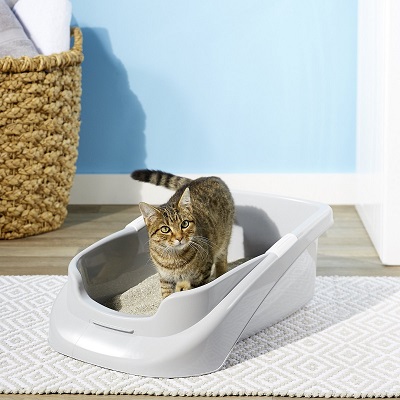
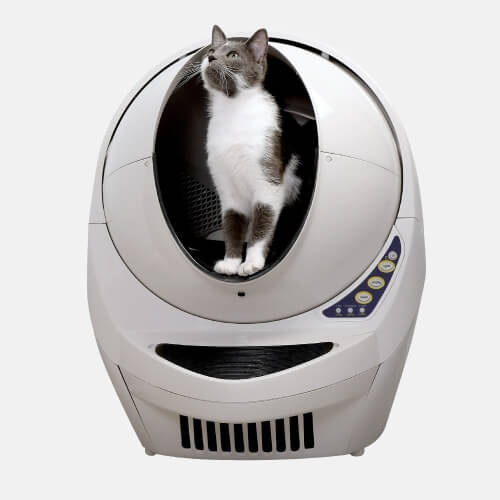
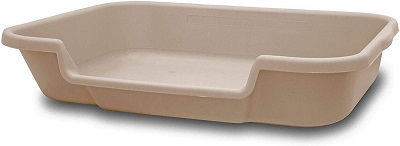
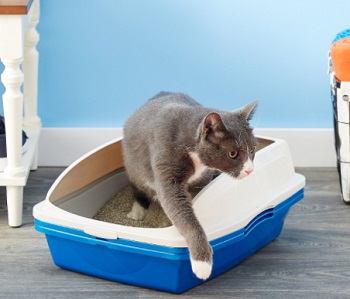
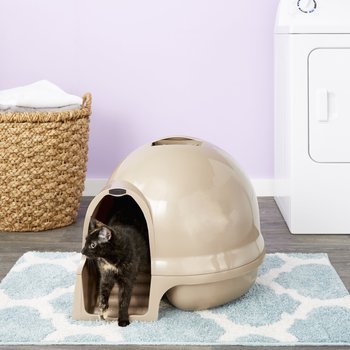
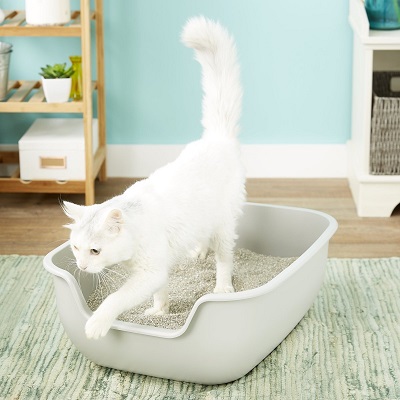
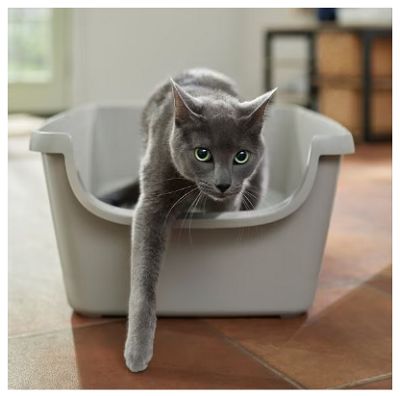
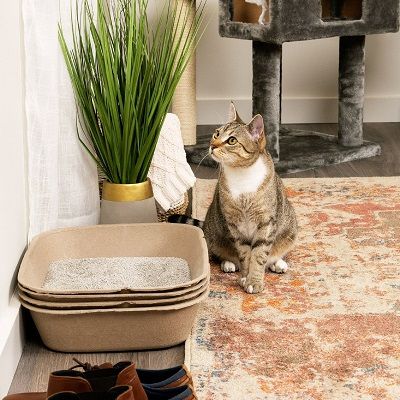




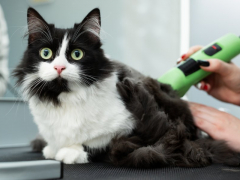
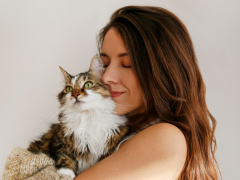


Thank you
Questions for Kate:
Do your three cats all use the same litters box?
What cleaning product do you use to clean their litter box and the floor of the room it is in?
We have two old cats 20–25 years of age. Both have kidney disease, ones disease is more progressed then the other. The one that is more advanced goes all the way in the litter box to pee but only half way in the poop and poops out side the box. Do you have any thoughts on what might be behind this changed behavior? We have modified the litter box so the step in is only 3 inches high.
Both our cats use the same box and have done so for 10 years or more.
Hi Ron!
My cats do use the same litter boxes. I have 6 or 7 of them, however, so they all seem to have their favorites. To clean the litter box I usually just use hot water and, when needed, some natural cleaning spray. For the floors, when there are accidents, I recently started using Zep pet stain remover and really like it!
As for your cat’s litter box behavior, it’s hard to say. It could have something to do with the progression of the kidney disease, but your vet would be the best person to ask about that. Wishing you and your cats well!